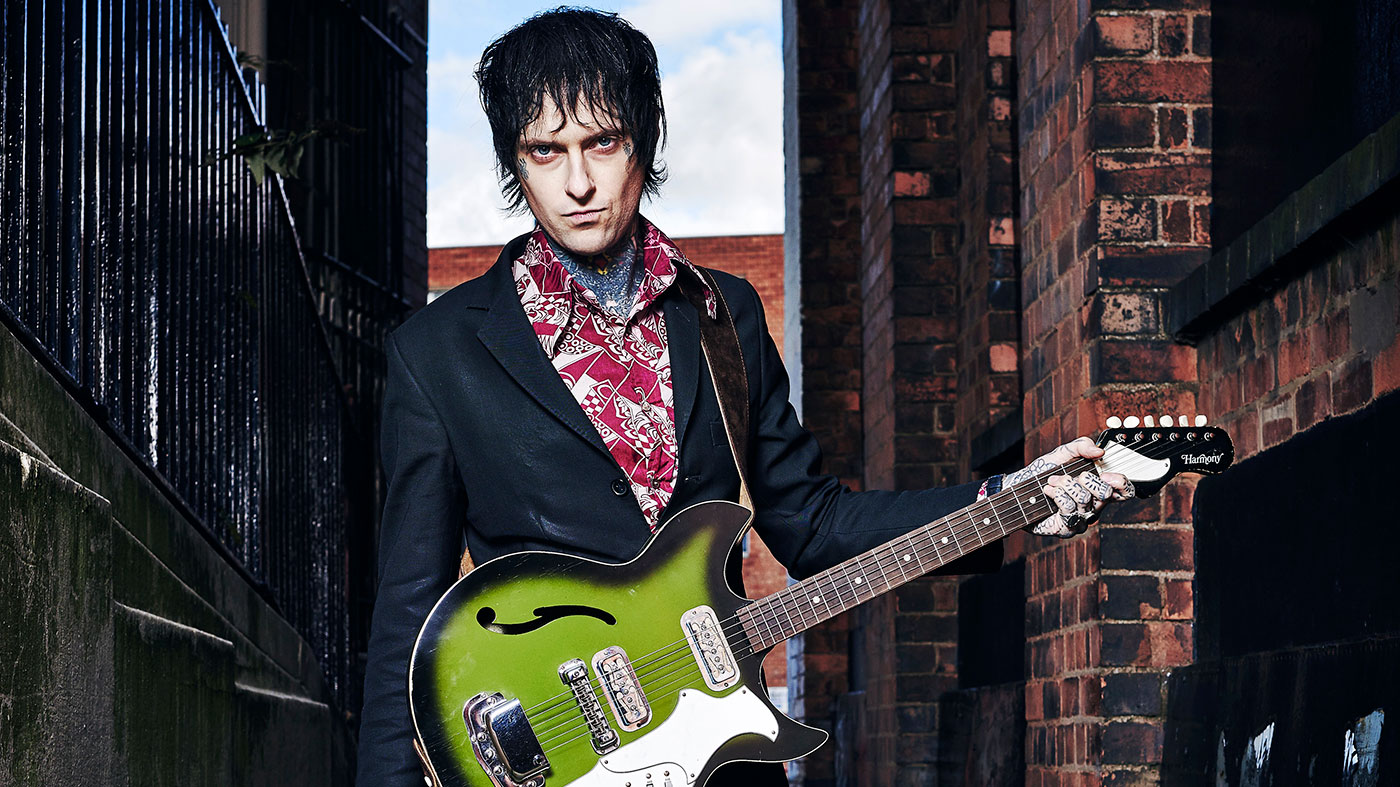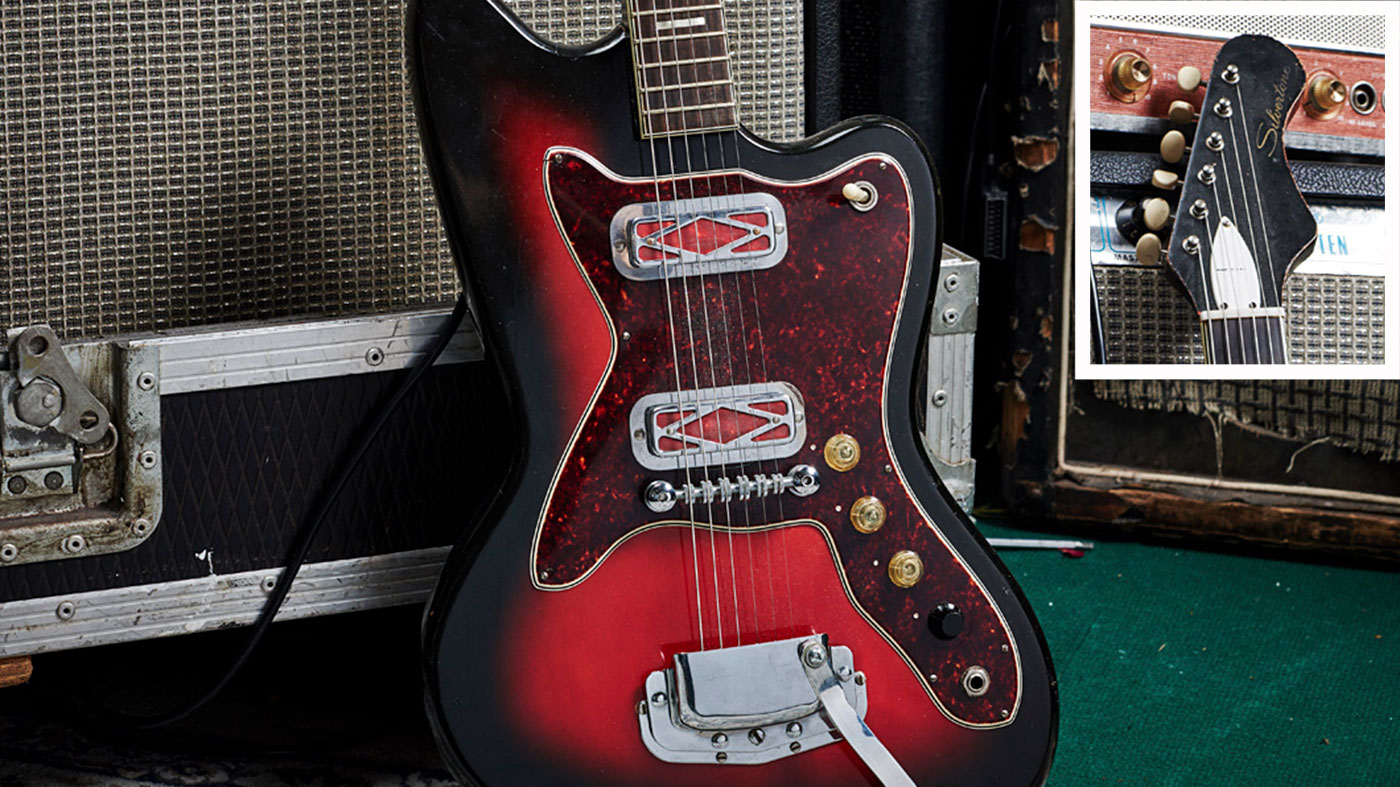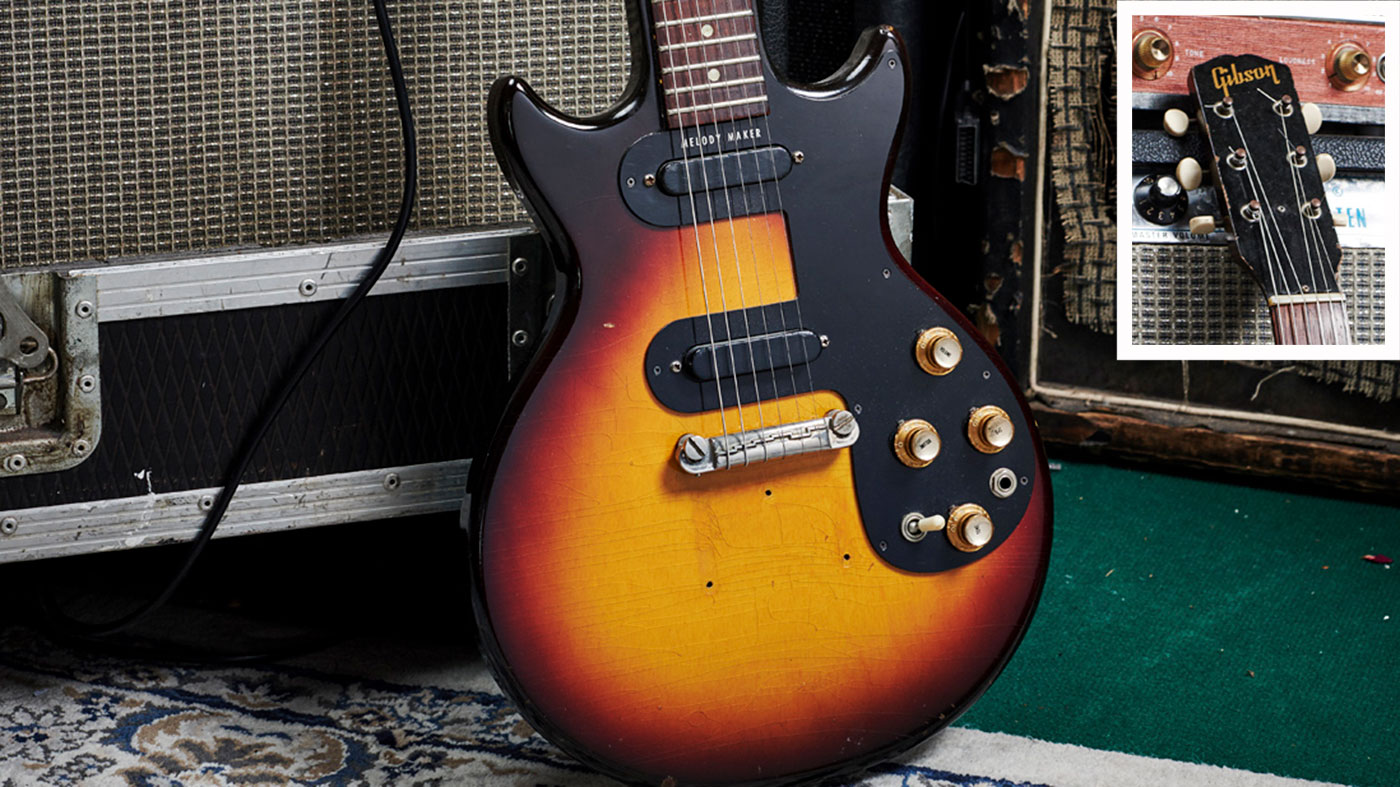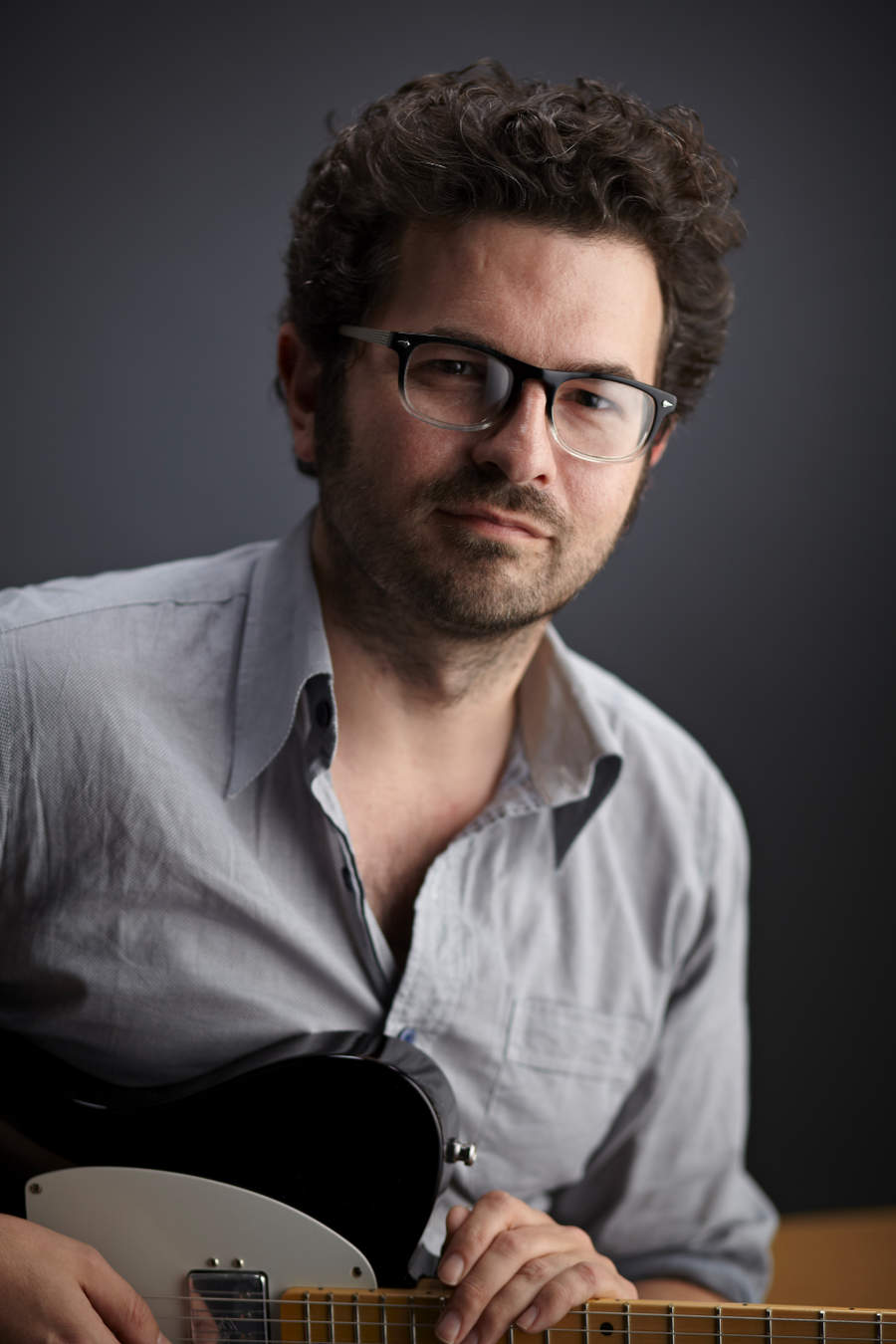Brandy Row: “I walked into a shop and said, ‘I just want to be Joe Strummer.’ They pulled out a Tele and that was it”
The enigmatic British songwriter talks us through his guitar collection

If Ronnie Wood had joined The Clash he might have sounded something like Essex rebel-rouser Brandy Row. We join this tattooed neo-troubadour, who’s a veteran of Denmark Street’s Tin Pan Alley, to discuss taking on the world with a fistful of battered old guitars...
Brandy Row is musing on the spirit of rock ’n’ roll that drives his music. “It’s just a raw intensity and a passion,” he reflects. “And I guess that every decade you see it in different forms - but it all comes from the same kind of wildness.”
We’ve joined the Essex guitarist at Park Studios JQ in Birmingham. It’s the kind of place that might have been called ‘happening’ back in the 60s. At the top of some concrete stairs, in an old industrial building, a fashion shoot is taking place amid the battered amps and oriental rugs that fill the live room. When not being used as a set, the studio is a recording complex and it’s where Brandy cut his new album, Crazy World.
The main thing that I do is perform as a solo artist with an acoustic guitar, but I have a lot of pedals
Like all music that comes from an honest, original place, Brandy’s music is hard to pin down. Sometimes he channels Jam-era Weller, at other times he’s akin to an anglicised Johnny Cash - but mostly he sounds like who he is: the son of punk parents who grew up on Stones, Dylan and Robert Johnson records.
“I don’t know. It’s a mixture between alternative, folk, psychedelic blues, rock ’n’ roll and poetry. I don’t know what it is,” Brandy admits, laughing. “But that’s the beauty about being a solo artist: you can get away with changing styles completely. If you’re a band, it’s harder.
“The main thing that I do is perform as a solo artist with an acoustic guitar,” he continues. “But I have a lot of pedals and there’s lots of ambient sound. And then sometimes I perform with a cello player, a violin player and a synth player… I’ve also got a band in Berlin, which is my backing band, and they’re called The Nightshades. Plus I have an 11-piece band that’s based in Birmingham and London, called The Coalition Of Sound.”
A thread of unflinching honesty binds the different projects together. Songs such as Decline Of A Better Man and The Drifter are brimming with pugnacious London spirit. Lyrically, Brandy puts his life under a cracked microscope lens and commits the observations to vinyl.
Want all the hottest music and gear news, reviews, deals, features and more, direct to your inbox? Sign up here.
“It’s not hard to write honestly, it’s just whatever comes out,” he tells us. “And I think that’s the only thing; I’m pretty honest about stuff. If you’ve had quite a lot of experiences, then it’s quite easy to write in that respect. It’s just releasing stuff. But it’s all quite organic, I don’t really think about it too much.”
Brandy's guitars - in pictures

Harmony H82 Rebel
“They only made them in that colour for a short time,” says Brandy. “It’s a really good guitar.”
The original catalogue description boasted that the Rebel was “built of laminated maple, with celluloid bindings on top and back edges”.
The catalogue also touted the fact that “the electronics were designed in co-operation with DeArmond… The Rebel’s stick-shift volume and tone controls are the newest development in the guitar field… now you just move your stick-shift on straight line for a new ease and accuracy in producing your favourite effects.”

Silvertone 1478 Silhouette
The Silvertone 1478 Silhouette in Redburst finish was a variant of the closely similar Harmony H-19 solidbody, built between 1963 and 1967, which had different pickups and a Hagstrom vibrato. The Silhouette was larger than the superficially similar Harmony H15 Bobkat, as played by St Vincent.

1963 Gibson Melody Maker
“I’ve been in a lot of punk, rock ’n’ roll and garage bands and that was at the forefront of a lot of that - it cut through with single coils,” says Brandy. Gibson launched the student-grade line with Melody Makers in 1959, with a single-cut slab body 13/8-inch deep with an unbound rosewood fingerboard and a 21/4-inch headstock lacking the ‘wings’ of most Gibson electrics.

1961 Harmony H-66 Vibrajet
“This is one of my favourite guitars, they only made them for five years,” Brandy says. “It’s got a built-in tremolo effect - it’s actually in the guitar and it’s phenomenal, but it uses an N-cell battery.”

1964 Gibson C-0
“Another lovely little guitar is the classical Gibson,” Brandy says. “That’s one of the lower-end ones because they made them in six models, graded from one to six.”
Gibson launched the C-0 in 1962 with a 14¼-inch-wide top and mahogany back and sides. It had an ebony nut with a zero fret, rosewood fingerboard and a satin finish. Production ceased in 1970.

1965 Epiphone Texan
Introduced in 1958, the round-shouldered Texan was a dreadnought-type acoustic guitar with a 25½-inch scale length, a 16¼-inch wide top and single parallelogram inlays on the rosewood fingerboard. The characteristic ‘slashed C’ Epiphone logo is visible on the pickguard. By 1965, when this one was produced, the guitar featured an adjustable rosewood bridge.
Top Gear
Brandy uses a variety of offbeat vintage guitars to carve out his sound (we’ll come to this shortly), but on the road for the solo dates - his bread and butter - he relies on a workhorse Martin.
“The 00-15 is the one - that 15 series, they hit the nail on the head there,” he says. “To be honest, I’m not necessarily a Martin fan, I just played this guitar and it shouted at me, you know?”
I run two pickups in my guitar - an LR Baggs M1 Active, which is a magnetic soundhole pickup, and an Element as well
To conjure up a bigger sonic presence when he’s on stage, Brandy uses a flexible, two-pickup system.
“I run two pickups in my guitar - an LR Baggs M1 Active, which is a magnetic soundhole pickup, and an Element as well. So I run two different cables to two different signal chains on my pedalboard, so I can get a nice reverb underneath and some crazy sounds above that. That way you can get the best of everything really.”
While he’s a pragmatist when it comes to doing solo shows, Brandy’s real love is old American guitars - the weirder the better in some cases, classic as can be in others.
“For some reason you can’t beat old wood,” he says. “You get this vibe with something old because it’s got this romanticism; that’s probably what it is [laughs]. But you can feel it. And, yeah, I’ve just ended up with a lot of nice instruments because, as we all do, I fucking love guitars. But they all serve a purpose. Every guitar I have, I’ve used on every record that I’ve made to get that pinpoint sound because they’re all different.
“For example, I’ve got an Epiphone Texan from 1965 and they only made those for nine years. It’s one of the biggest, boomiest guitars possible. I want to get that on a record soon. I was hoping the Texan was a 1964, because I love that year. And it’s odd because it’s got a normal-shape neck, but in early 1965, Gibson introduced the pencil neck. This hasn’t got it, though. The serial number dates to 1965, but I’m convinced that it’s really a ’64. Unfortunately, it’s had a headstock break, but it’s still an amazing guitar.”
Harmonica Man
Brandy is also a mean hand with the harmonica, following in the footsteps of his harp-playing role model, bluesman Little Walter. Any tips for beginners?
“There are different types of harmonicas and combs. With a wooden one, it’s a lot warmer and a lot louder. And then when you’ve got a plastic comb, it’s gonna be good but it won’t develop - so there’s ABS combs and then there’s bamboo combs. I would say just get a Marine Band [type of harmonica] in C,” he advises. “That’s good for Little Walter and Bob Dylan. Another good thing about the Marine Band is that the comb is actually pear-tree wood - so you get one of your five a day when you play it [laughs].”
I used to spend a lot of time in Chicago and I fell in love with Harmony guitars just because I saw them in guitar shops around the city
When he plugs in, Brandy relies on guitars as distinctive as his own voice, especially the so-called ‘mail order guitars’ by 60s makers, such as Harmony, which he values for their sonic variety, finding niches for their idiosyncratic sounds all over his records. Brandy’s collection is one lighter since recording Crazy World, however, as he gave one of the Harmony solidbody guitars to his producer to say thanks.
“Yeah, I gave the Silhouette to Alastair [Jamieson], my producer, because he’s amazing. It’s a really good guitar - it’s an offset and it’s got the diamond red-foil pickups in it. They almost sound like a mini-humbucker and these particular ones are very overwound - but they do vary a lot. They’re super-hot and you just get a real 60s sound out of ’em.
“It all went bust in ’75,” Brandy says of the last days of the old-time Harmony guitars. “And apparently the Harmony factory had a big yard sale and you could just go and get all these different guitars and parts and stuff. I used to spend a lot of time in Chicago and I fell in love with them just because I saw them in guitar shops around the city, so I knew about them before they got popular. They were just everywhere. But they’ve gone up loads now - these things are getting older and older and people are starting to recognise that they really are great guitars.”
Now when I’m not touring and doing my music, I manage the shop that I bought my first guitar in
In terms of amps and overdrives, it’s a similarly garage-oriented picture. “I’ve got a little Vox and I’ve had a few Harmony and Silvertone amps. One thing that I’ve got that is quite funny is a Fender Vaporizer. They’re cool - nothing to write home about but they do the job. They look cooler than they are, really! Pedal-wise, I use a lot of the Z.Vex stuff - like Box Of Rock and stuff like that. And I’ve got an old Kalamazoo Rat and some old Pearl pedals as well. And this other pedal company called Lone Wolf Audio.”
Gear’s a subject Brandy’s more than acquainted with as he has enjoyed a close professional relationship with Denmark Street guitar store Wunjo’s for some time, partly because the store helped set him on the road to guitar playing.
“So my first guitar was a Telecaster,” Brandy recalls. “I walked into a shop in Denmark Street in central London and I spoke to a guy called Brian Rowe [Wunjo’s owner] and I said to him, ‘I just want to be Joe Strummer.’ And he pulled out a Tele and that was it. That was quite a long time ago and now when I’m not touring and doing my music, I manage the shop that I bought my first guitar in.”
As a man who’s now helped many other players on their mission to find their first guitar, what’s Brandy’s advice for absolute beginners on Denmark Street?
“We never let them make a mistake,” Brandy says. “We all very much enjoy it - I love it and it’s more than just working in a guitar shop. I think we’re making a difference and keeping that stuff alive. It’s very important and I look at it like that.”
Jamie Dickson is Editor-in-Chief of Guitarist magazine, Britain's best-selling and longest-running monthly for guitar players. He started his career at the Daily Telegraph in London, where his first assignment was interviewing blue-eyed soul legend Robert Palmer, going on to become a full-time author on music, writing for benchmark references such as 1001 Albums You Must Hear Before You Die and Dorling Kindersley's How To Play Guitar Step By Step. He joined Guitarist in 2011 and since then it has been his privilege to interview everyone from B.B. King to St. Vincent for Guitarist's readers, while sharing insights into scores of historic guitars, from Rory Gallagher's '61 Strat to the first Martin D-28 ever made.


